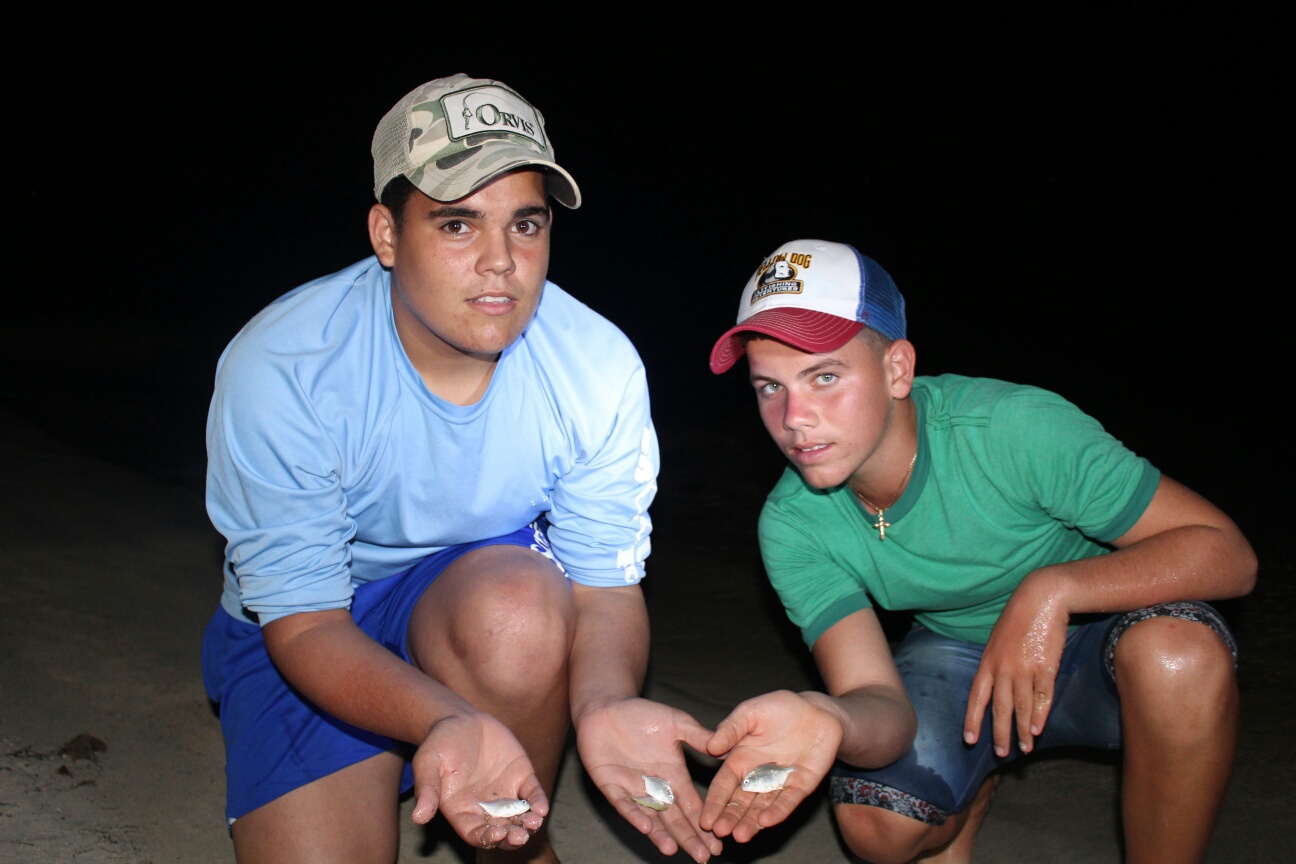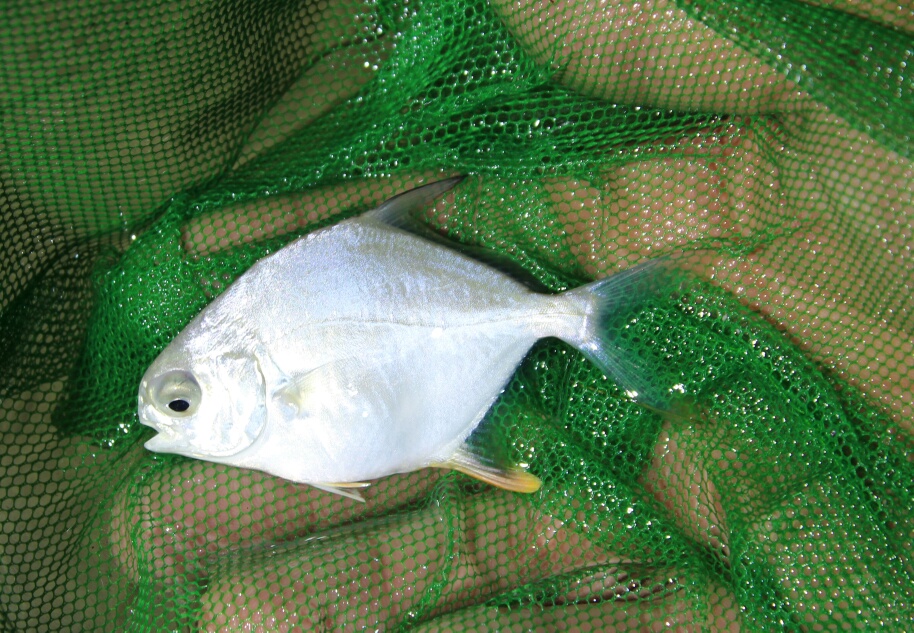A friend and BTT partner on the south coast of Cuba, Felipe Rodriguez (Master Guide for the flats fishery at the Zapata Swamp National Park), recently sent us a report about the amazing number of baby permit that are along the beaches near the Bay of Pigs. And he has awesome pictures to prove it.
 Felipe and the students at his fishing and environmental education program recently discovered “thousands of baby permit swimming along all of the beaches in the area”. They are getting their best photos at night because it is easier to see and catch them, and all the permit are all a few inches long or less. Felipe reports that local fishermen catch the juvenile permit in their nets as they are catching bait, but that they are releasing the permit, which is a great reflection on Felipe’s education and conservation efforts in the local community.
Felipe and the students at his fishing and environmental education program recently discovered “thousands of baby permit swimming along all of the beaches in the area”. They are getting their best photos at night because it is easier to see and catch them, and all the permit are all a few inches long or less. Felipe reports that local fishermen catch the juvenile permit in their nets as they are catching bait, but that they are releasing the permit, which is a great reflection on Felipe’s education and conservation efforts in the local community.
Here is what we think is happening:
Permit spawn off deep reef drop-offs, similar to groupers and some snappers. They spawn seven days after the full moon. When they spawn, they have a spawning behavior called ‘broadcast spawning’ – groups of males and females rush together toward the surface, releasing eggs and sperm into the open water. The eggs are fertilized in the open water, and after they hatch, the tiny permit larvae drift in the ocean currents for about 15-20 days as plankton. If they are lucky, the small permit find a sandy beach at the end of the larval stage and begin life feeding on bottom organisms.
 It’s likely in this instance that, just by luck, the ocean currents near the Bay of Pigs lined up perfectly to deliver a large number of baby permit to the beaches in Felipe’s area. This happens for many fish species – some years the currents are good and deliver a lot of juveniles, other years the currents are not good and there are few juveniles. It’s likely that a lot of these small permit will be eaten by other fish (Felipe reports seeing larger fish chasing the baby permit), but since there are so many permit this year, a lot of them will survive. This means that in a few years they are probably going to be finding a lot more of them on the flats! The size of the permit Felipe and his students are finding suggests that these juveniles were spawned a month or two ago. They are going to visit the area every couple of weeks to measure these permit so we can estimate their growth rates and learn more about them before they grow up and become the heartbreakers of the flats.
It’s likely in this instance that, just by luck, the ocean currents near the Bay of Pigs lined up perfectly to deliver a large number of baby permit to the beaches in Felipe’s area. This happens for many fish species – some years the currents are good and deliver a lot of juveniles, other years the currents are not good and there are few juveniles. It’s likely that a lot of these small permit will be eaten by other fish (Felipe reports seeing larger fish chasing the baby permit), but since there are so many permit this year, a lot of them will survive. This means that in a few years they are probably going to be finding a lot more of them on the flats! The size of the permit Felipe and his students are finding suggests that these juveniles were spawned a month or two ago. They are going to visit the area every couple of weeks to measure these permit so we can estimate their growth rates and learn more about them before they grow up and become the heartbreakers of the flats.
Photo credits: Felipe Rodriguez




